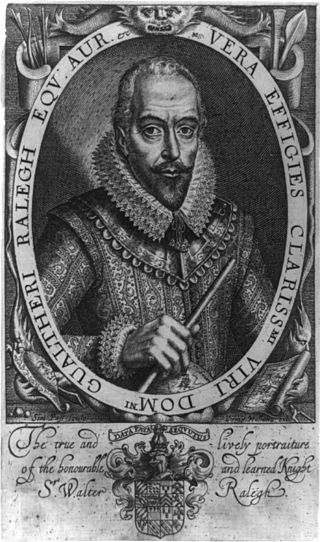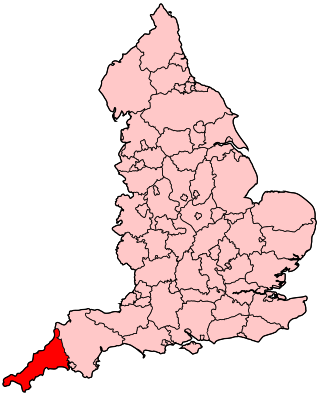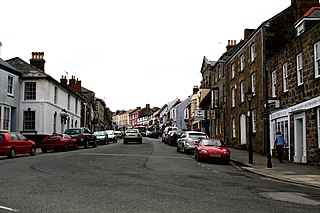
Helston is a town and civil parish in Cornwall, England, United Kingdom. It is situated at the northern end of the Lizard Peninsula approximately 12 miles (19 km) east of Penzance and 9 miles (14 km) south-west of Falmouth. Helston is the most southerly town on the island of Great Britain and is around 1.5 miles (2.4 km) farther south than Penzance. The population in 2011 was 11,700.

The Duchy of Cornwall is one of two royal duchies in England, the other being the Duchy of Lancaster. The eldest son of the reigning British monarch obtains possession of the duchy and the title of Duke of Cornwall at birth or when his parent succeeds to the throne, but may not sell assets for personal benefit and has limited rights and income while a minor.

Stannary law is the body of English law that governs tin mining in Cornwall and Devon; although no longer of much practical relevance, the stannary law remains part of the law of the United Kingdom and is arguably the oldest law incorporated into the English legal system.

The Cornish rebellion of 1497, also known as the First Cornish rebellion, was a popular uprising in the Kingdom of England, which began in Cornwall and culminated with the Battle of Deptford Bridge near London on 17 June 1497.

The constitutional status of Cornwall has been a matter of debate and dispute. Cornwall is an administrative county of England.
A stannary was an administrative division established under stannary law in the English counties of Cornwall and Devon to manage the collection of tin coinage, which was the duty payable on the metal tin smelted from the ore cassiterite mined in the region. In Cornwall, the duty was passed to the Duchy of Cornwall; in Devon to the Crown.
The Cornish Stannary Parliament was the representative body of the Cornish stannaries, which were chartered in 1201 by King John. In spite of the name, the Parliament was not a Cornish national assembly, instead representing the interests of the tin industry; however, due to the significant proportion of Cornwall's population involved in the tin trade, it wielded considerable power.

The Lord Warden of the Stannaries used to exercise judicial and military functions in Cornwall, England, UK, and is still the official who, upon the commission of the monarch or Duke of Cornwall for the time being, has the function of calling a stannary parliament of tinners. The last such parliament sat in 1753.

Mining in Cornwall and Devon, in the southwest of Britain, is thought to have begun in the early-middle Bronze Age with the exploitation of cassiterite. Tin, and later copper, were the most commonly extracted metals. Some tin mining continued long after the mining of other metals had become unprofitable, but ended in the late 20th century. In 2021, it was announced that a new mine was extracting battery-grade lithium carbonate, more than 20 years after the closure of the last South Crofty tin mine in Cornwall in 1998.

The Tin Duties Act 1838 is an Act of the Parliament of the United Kingdom which abolished the tin coinage taxation system of the tin mines in Cornwall and Devon, and authorized instead an annual payment to the Duke of Cornwall to compensate for this loss of revenue. The Act also compensated the officers who collected the tax. Until that time Cornwall paid 4 shillings per hundredweight of coined tin, Devon 1 shilling 6+1⁄2d.
The Revived Cornish Stannary Parliament, was a pressure group which claimed to be a revival of the historic Cornish Stannary Parliament last held in 1753. It was established in 1974 and campaigned, up until 2008, against the government of the United Kingdom's position on the constitutional status of Cornwall.
The Cornish rotten and pocket boroughs were one of the most striking anomalies of the Unreformed House of Commons in the Parliament of the United Kingdom before the Reform Act of 1832. Immediately before the Act Cornwall had twenty boroughs, each electing two members of parliament, as well as its two knights of the shire, a total of 42 members, far in excess of the number to which its wealth, population or other importance would seem to entitle it. Until 1821 there was yet another borough which sent two men to parliament, giving Cornwall only one fewer member in the House of Commons than the whole of Scotland.

The Stannary Palace, also known as the Duchy Palace, was a complex of buildings operated by the Dukes of Cornwall as the centre of their administration. The surviving exchequer hall is a Grade I listed building.

Currency, in the form of coins, has been issued in Cornwall periodically since at least the 10th century AD, while banknotes were issued into the 19th century.

The following outline is provided as an overview of and topical guide to Cornwall: Cornwall – ceremonial county and unitary authority area of England within the United Kingdom. Cornwall is a peninsula bordered to the north and west by the Celtic Sea, to the south by the English Channel, and to the east by the county of Devon, over the River Tamar. Cornwall is also a royal duchy of the United Kingdom. It has an estimated population of half a million and it has its own distinctive history and culture.
Presented below is an alphabetical index of articles related to Cornwall:

Sharkham Point Iron Mine was an iron mine at Sharkham Point, near the town of Brixham in Devon. The mine was worked for around 125 years and employed at its peak 100 workers. It was primarily an open cast mine, but five shafts and six adits are also mentioned in reports of the site. Some are still accessible today, but since the area was used as a rubbish tip in the 1950s and 1960s, much of the archaeology has been covered over.
The Stannary Convocation of Devon, also known as the Great Parliament of the Tinners or as the Devon Stannary Parliament, was an assembly in the English county of Devon, with the power to amend and expand the stannary law in the county. Initially assembled in the Middle Ages by the Lord Warden of the Stannaries, the Stannary Convocation developed out of the predecessor to the judicial Courts of the Vice-Warden of the Stannaries but was established as an institution in its own right by the sixteenth century, with the power to both proclaim the existing customs as English law and to legislate regarding the laws by which tinners, who were exempt from the jurisdiction of the ordinary English courts until 1896, conducted their business.

Helston Castle was a medieval castle thought to be built for Edmund, 2nd Earl of Cornwall in the late 13th-century, in Helston, Cornwall. The castle was ruined by the end of the 15th century, and sat at the bottom of Coinagehall Street, where the bowling green and Grylls Monument are now located. Although very little is known about the castle, it is speculated that the castle was a fortified manor house.

The Helston Coinage Hall was a Tudor coinage hall created for the purposes of tin coinage out of a 13th century chapel of ease. Its position lay at the southern end of Coinage Hall Street, opposite the Helston Castle. It was demolished by public subscription following the 1796 general election.














